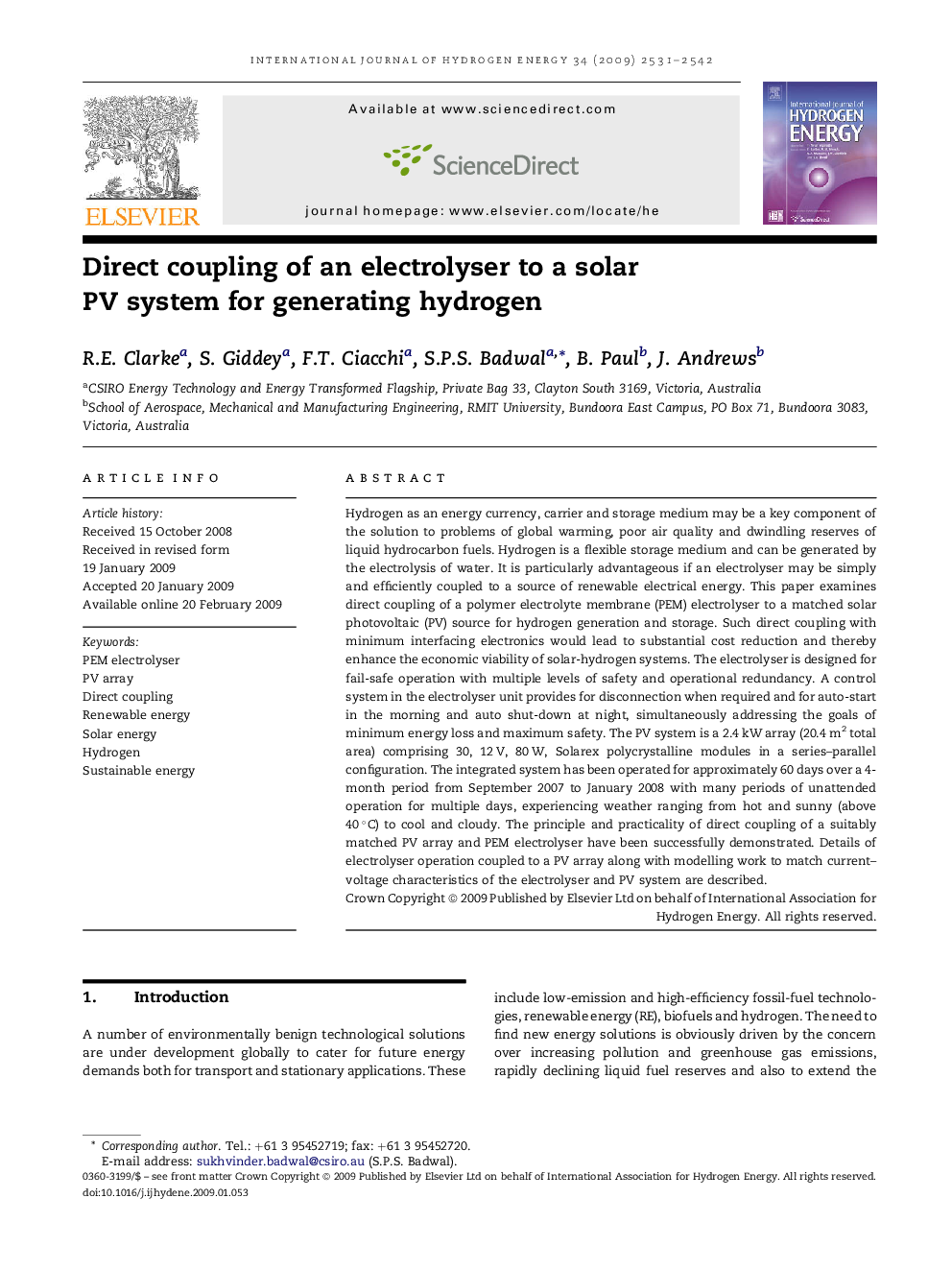| Article ID | Journal | Published Year | Pages | File Type |
|---|---|---|---|---|
| 1281183 | International Journal of Hydrogen Energy | 2009 | 12 Pages |
Hydrogen as an energy currency, carrier and storage medium may be a key component of the solution to problems of global warming, poor air quality and dwindling reserves of liquid hydrocarbon fuels. Hydrogen is a flexible storage medium and can be generated by the electrolysis of water. It is particularly advantageous if an electrolyser may be simply and efficiently coupled to a source of renewable electrical energy. This paper examines direct coupling of a polymer electrolyte membrane (PEM) electrolyser to a matched solar photovoltaic (PV) source for hydrogen generation and storage. Such direct coupling with minimum interfacing electronics would lead to substantial cost reduction and thereby enhance the economic viability of solar-hydrogen systems. The electrolyser is designed for fail-safe operation with multiple levels of safety and operational redundancy. A control system in the electrolyser unit provides for disconnection when required and for auto-start in the morning and auto shut-down at night, simultaneously addressing the goals of minimum energy loss and maximum safety. The PV system is a 2.4 kW array (20.4 m2 total area) comprising 30, 12 V, 80 W, Solarex polycrystalline modules in a series–parallel configuration. The integrated system has been operated for approximately 60 days over a 4-month period from September 2007 to January 2008 with many periods of unattended operation for multiple days, experiencing weather ranging from hot and sunny (above 40 °C) to cool and cloudy. The principle and practicality of direct coupling of a suitably matched PV array and PEM electrolyser have been successfully demonstrated. Details of electrolyser operation coupled to a PV array along with modelling work to match current–voltage characteristics of the electrolyser and PV system are described.
